
How do you feel about all the latest new cooking toys like instant pot or sous vide? Steph and I first got an immersion circulator way back in 2014, but pretty much neither of us used it more than a couple times a year. We’d take it out to make sous-vide eggs, or the odd rib or steak, but overall we just never used it much. This year though, something changed and I broke it out every chance I got. Every time it was my turn to cook, if I could sous vide something, I did. I lived and breathed sous vide. I even read magazines about it.
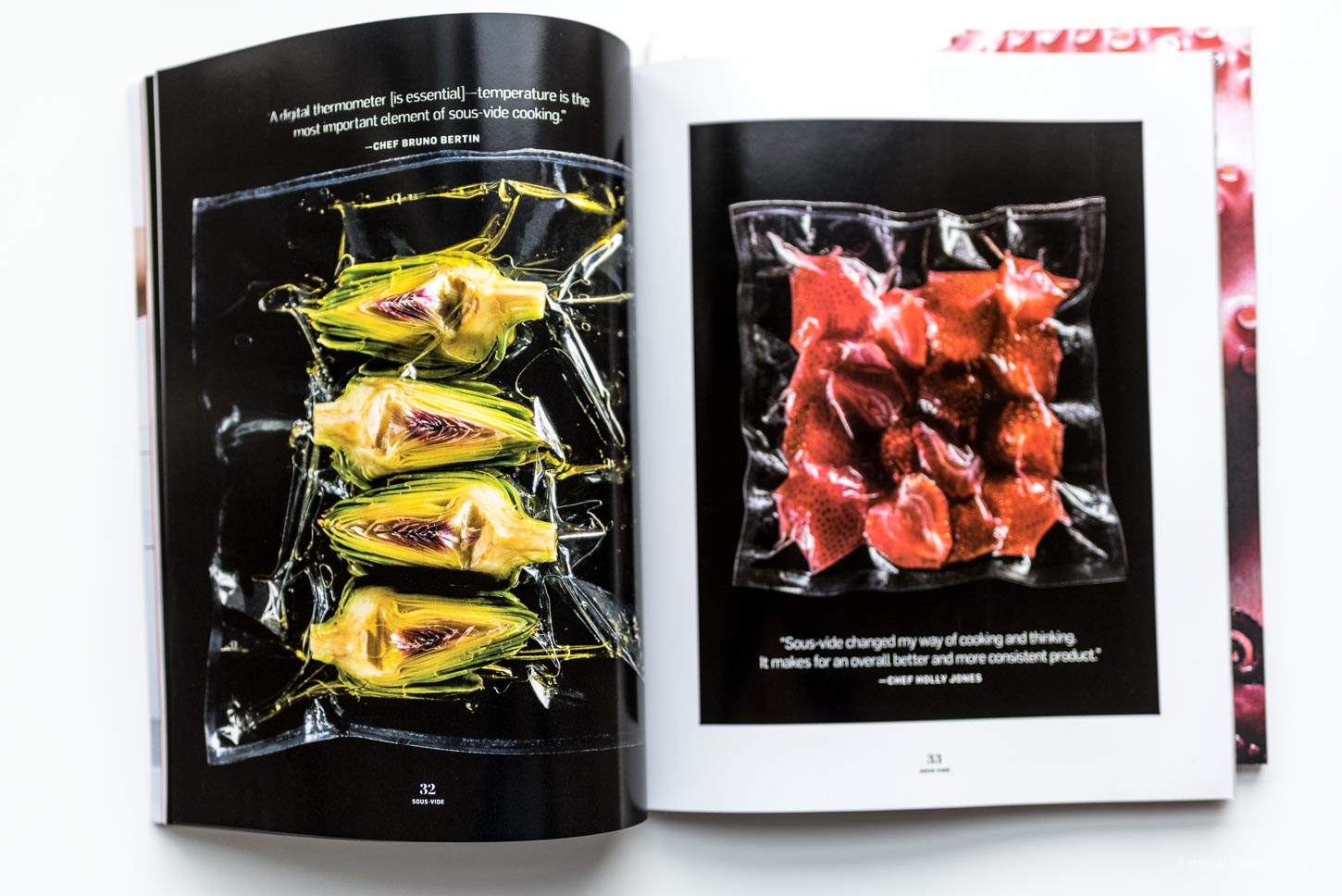
where do they get these awesome clear bags?!
I have this one beautifully shot magazine I love called Sous Vide. It features high powered interviews with people like Curtis Duffy (Grace Chicago, check out the documentary on Netflix) and Kenji Lopez Alt (needs no introduction if we’re on the internet) as well as features of things you’d never think of like sous vide for cocktails. It’s just a great magazine and really dives deep into sous vide – think of it like Kinfolk but sous vide instead of travel and eating.
Recently I was flipping through when I noticed an interesting recipe for a sous vide duck. This was no ordinary sous vide duck recipe though; it was a super authentic looking Japanese duck recipe. I was immediately intrigued; Steph and I have a pretty close connection to Japanese food and we can usually spot fake Japanese recipes a mile away. Typically when you see ethnic asian recipes in mainstream magazines they’re way off base, or purposefully “asian-inspired” so you’re not going nuts shopping for esoteric ingredients. But this duck from Sous Vide was the real deal – to the point of obnoxiousness about the ingredients. If you are shopping at Ralphs or Whole Foods, you’ll be tearing your hair out finding a few of these items. It sounded perfect.

Our bonito flake stash – we splurge on good katsuobushi and keep it in the fridge
How to sous-vide a duck
I love duck and have never made it before, I’m not sure why. Because it was a properly Japanese recipe I figured all I needed to do was get a duck breast. For living in North America we keep a fantastically stocked japanese pantry – there’s always dried goods like different kinds of niboshi and kombu to stuff like yuzu kosho and yuzusco (the name comes from yuzu + tabasco) – if it doesn’t go bad we probably have it. So, without checking the pantry, I left my sick wife underneath our kotatsu while I went to the store to get a duck.
I probably should have checked our pantry first.
If you read food blogs or recipe sites long enough you’ll notice a certain kind of comment. Let’s say for example it’s a recipe for spaghetti and meatballs, the comment will say something like “This was great – I subbed out the beef for shrimp, and changed the spaghetti for vermicelli, and instead of a tomato sauce I used a Vietnamese fish sauce instead – awesome recipe, 10/10 would recommend!” It’s not wrong, it’s just not spaghetti and meatballs anymore.
In my mind I always laughed a little when I read those comments, but this time, the tables were turned on me because the truth is I found out I didn’t have all the ingredients. Not even close.
So, I became one of “those” commenters. I subbed out the kombu for a fresh dashi we had in the fridge, the umeboshi for umeshu, and the yuzu juice for sudachi juice (I actually had yuzu juice, I just like sudachi a lot more).
But you know, sometimes recipes are just guidelines and this was one of those times. The duck turned out perfectly anyway, and that’s the whole point of sous vide: you get good, consistent results every time if you set the temperature to the correct setting. For sous vide duck, 138.5ºF guarantees a you perfect duck, even if its your first time.
I also didn’t have any of the ingredients for the side dishes the magazine recommended. Steph recommended soba and I thought that sounded like an inspired idea. I ended up making it as a classic dipping soba with some seasoned reduced dashi. It was amazing. The duck had an ultra crispy skin but still had that slightly gamey, ducky taste alongside the very authentic Japanese flavors that you would expect from these ingredients.
But as good as the duck soba was, the siren call of the rendered duck fat left behind in the frying pan called to me. Who can waste duck fat? Not me. I decided to change the taste by turning it into a duck ramen. Ramen is something I like to think I’m pretty decent at, having experienced (with sometimes a less than willing Steph) hundreds of top ramen shops in Japan as well as made dozens of bowls over the last few years. There’s a guide on Tokyo ramen in our future if Steph still needs me to pick up the slack, by the way.
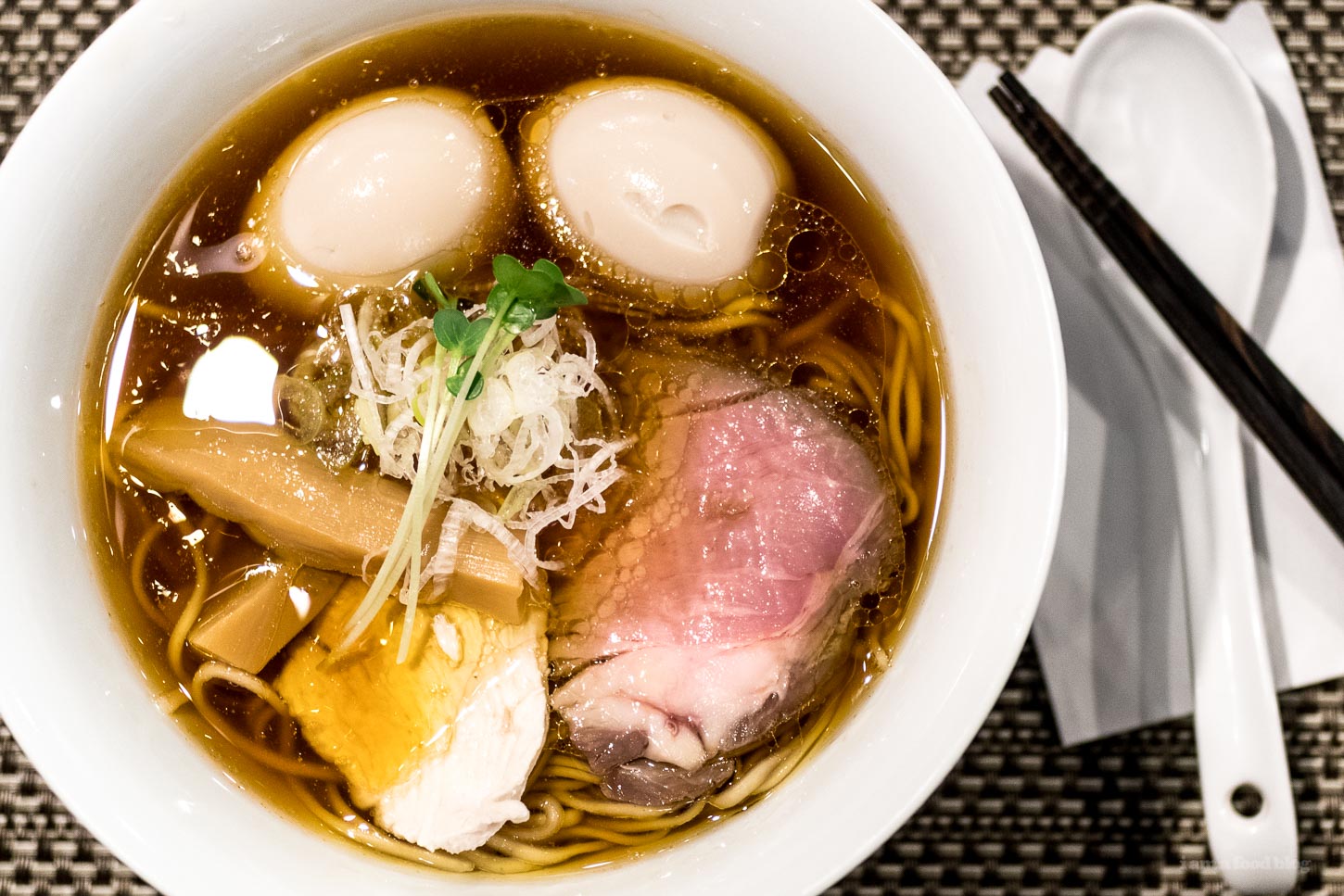
Yamaguchi in Waseda – #19 ramen shop in Tokyo depending on who you ask – this is Steph’s bowl, she always gets an extra egg
Duck Ramen
Ramen at its heart is just wheat noodles, a broth, an ultra-concentrated seasoning (called tare and pronounced tar-eh), and usually a slow cooked, tender cut of meat. Everything is optional and up for interpretation. I already had duck, noodles, and dashi which could double as the broth, so all I needed was the tare.
Tare provides a lot of the extreme layers of flavor ramen is famous for and it’s where I put most of my effort. For this one, I emulsified the duck marinade from the sous vide pouch into the rendered duck fat, then added the same amount of liquid in a good soy sauce. It was that easy. I loved the idea of using everything and wasting nothing – the complexity of the duck marinade boosted with the duck fat was perfect, and it was all there already.
Once I had the tare I just combined it with dashi, dropped the soba in, and bam, I had a duck ramen. Not just any duck ramen, a duck ramen good enough that I’m planning to make again and again. It was perfect. The deepest, darkest, duckiest broth. The duck fat coating the noodles. Was it sacrilegious to use soba instead of ramen? No, because ramen is a freestyle thing, and the soba noodle, which are significantly less chewy, were perfect to offset the slight chewiness of duck.
Duck-wise, was it the best duck I’ve ever had? Actually yes. It probably would come down to a close race on this duck vs Peking duck, but it was the best not-peking duck i’ve ever had and a million times simpler to make, so I think it deserves the win. I’m genuinely really happy this magazine pushed me out of my comfort zone and making my first duck a success. Sous vide for life baby.
Check out and subscribe to the magazine here, then let me know if I should do a tokyo ramen roundup.
PS, if you are new to sous vide – a secret to vacuum sealing liquids like this marinade is to freeze them before sealing.
Japanese Inspired Sous Vide Duck Recipe
Serves 4
Adapted from Sous Vide Magazine
- 2 lbs duck breast
- 1 tablespoon yuzu juice (substitute with lemon if needed)
- 2 teaspoons Japanese soy sauce
- 2 tablespoons mirin
- 1 tablespoon sake
- 2 sheets of dried kelp (kombu), rinsed
- 1/2 cup bonito fish flakes
- 2 shiitake mushrooms, sliced (can be dried)
- 2 teaspoons plum paste (umeboshi – I used umeshu)
- 2 stalks scallions, chopped
- 2 cloves black garlic (optional)
Add all ingredients into a vacuum seal bag and marinate for a minimum of 2 hours.
Set your immersion circulator to 138.5ºF and cook your duck for 1 hour.
Carefully remove your duck from the vacuum seal pouch and reserve the liquid if making ramen.
In a large saute pan without oil, sear duck with the skin side down over medium-low heat until golden brown, about 10 minutes. Flip and sear the other side for 1-2 minutes, then rest. Reserve the duck fat from the saute pan if making ramen.
Slice and serve.
Sous Vide Duck Ramen
Makes 1 bowl
- 3-4 slices sous vide duck (from above)
- Sous vide duck marinade (from above)
- Duck fat (from above)
- Japanese soy sauce
- 2 cups of dashi
- 3oz soba noodles
- green onions, sliced, to serve
Fill your serving bowl with hot tap water to heat it up and set aside.
Bring your dashi to a low simmer and hold.
In a small saucepan over medium heat, combine duck fat with the reserved marinade and whisk. Add the same volume of liquid again in soy sauce. Remove from heat and reserve.
Cook your soba noodles according to package instructions.
While noodles are cooking, drain your ramen bowl, then add 2 teaspoons of tare and 2 cups of dashi. Taste and adjust for seasoning with more tare. The broth should be on the saltier side to offset the noodles.
Once noodles are cooked, drain into a colander and rinse with warm water. Carefully add noodles to the bowl, then top with 3-4 slices of duck, chopped green onions, and if you have it, a few strips of nori and a ramen egg.
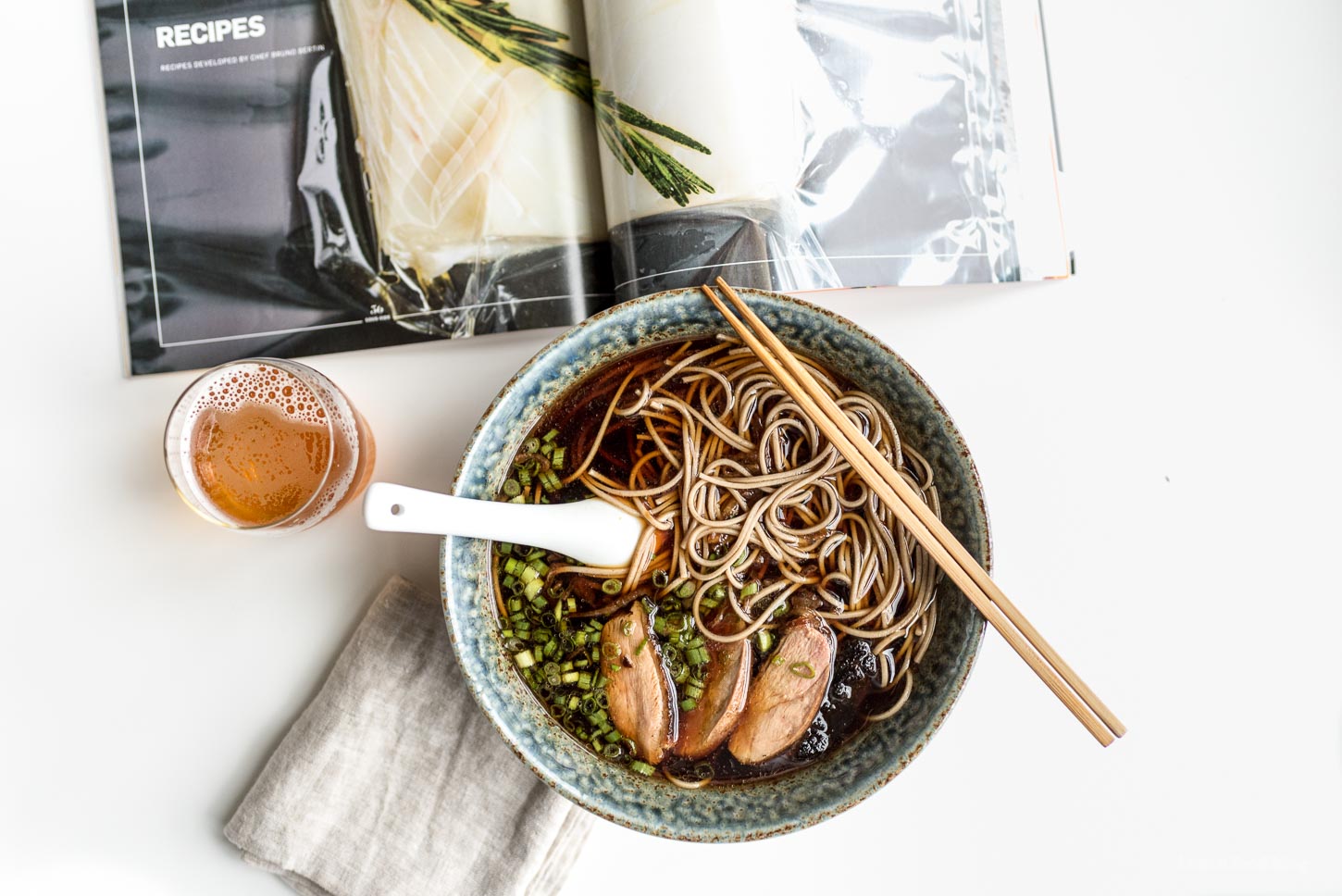
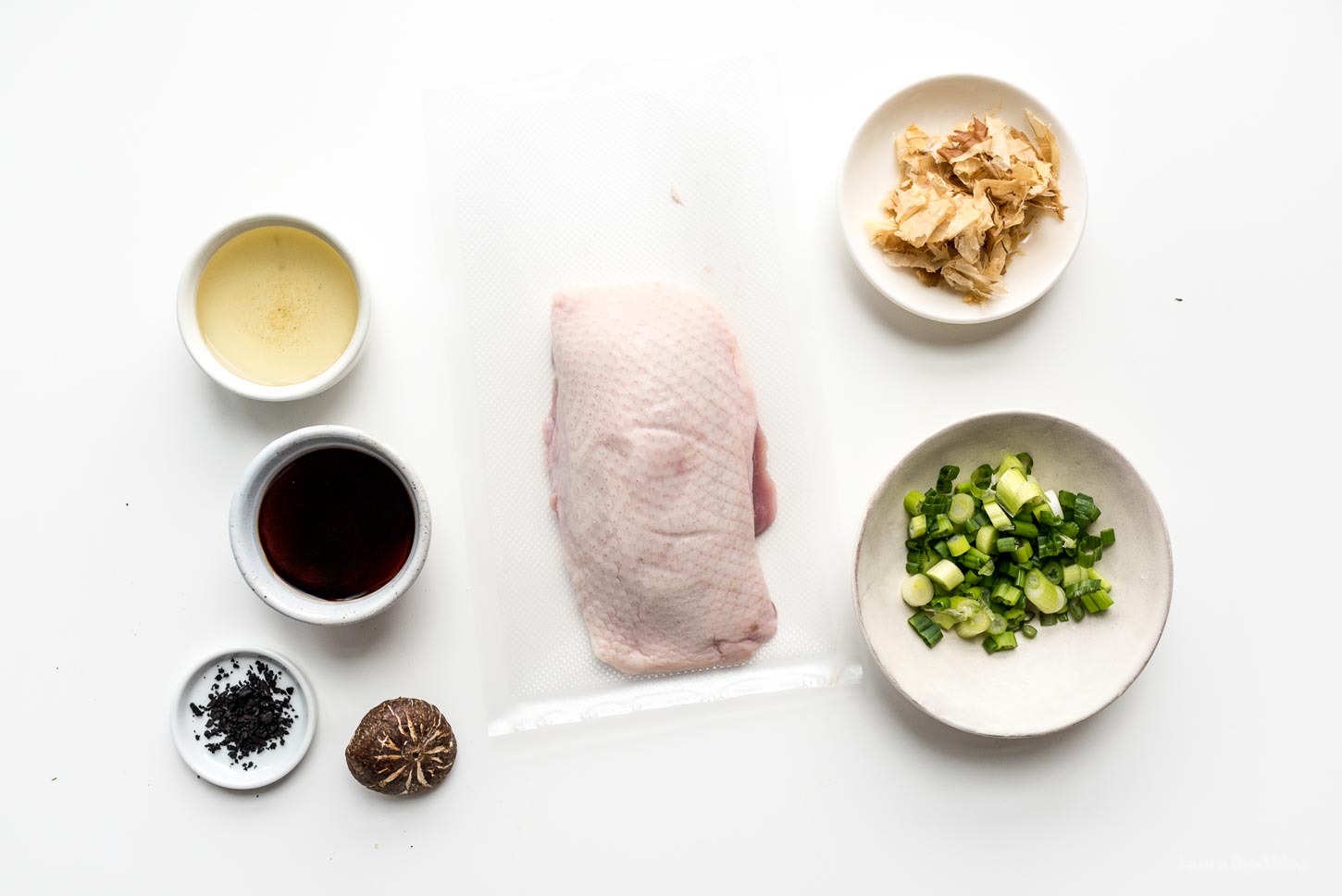

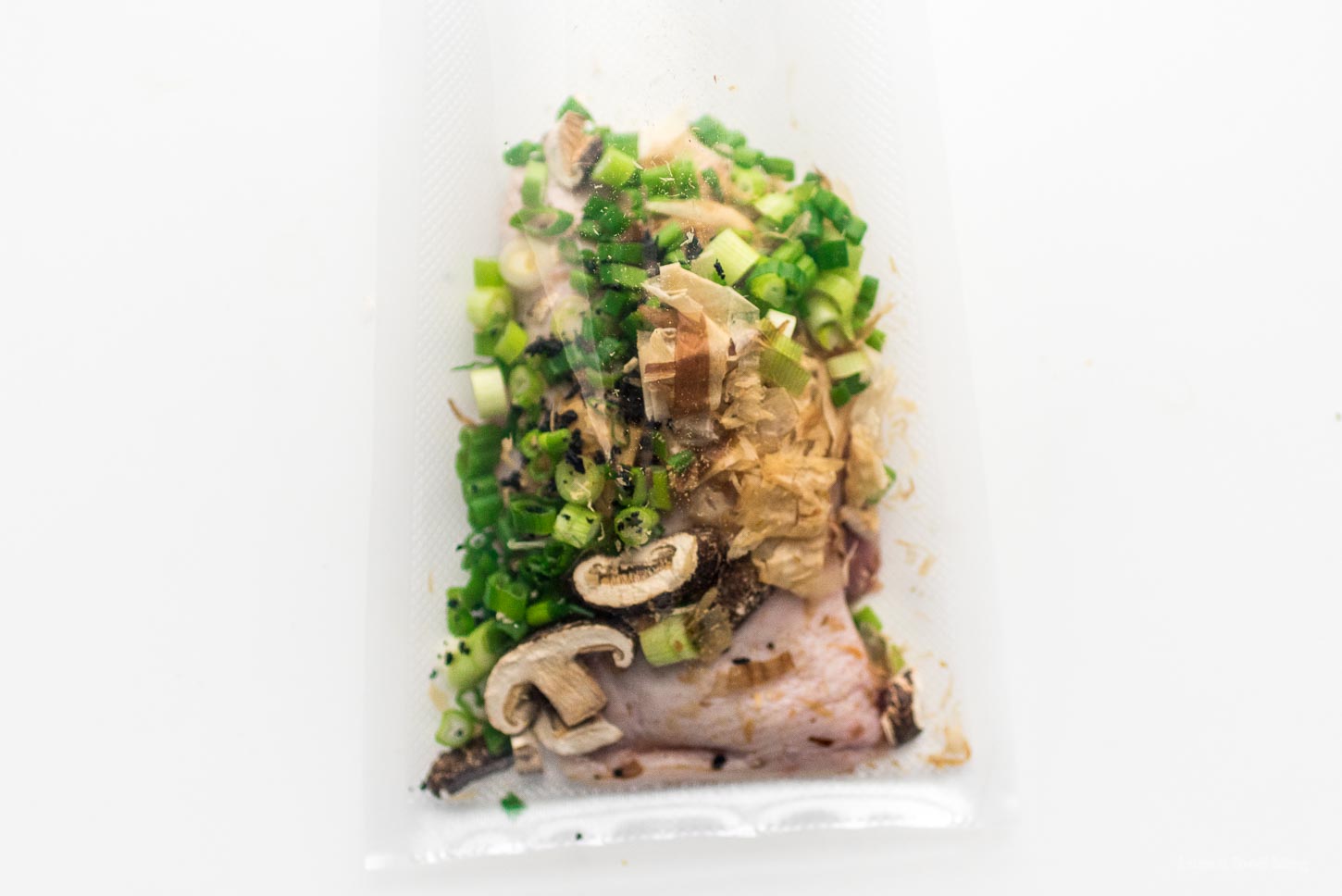
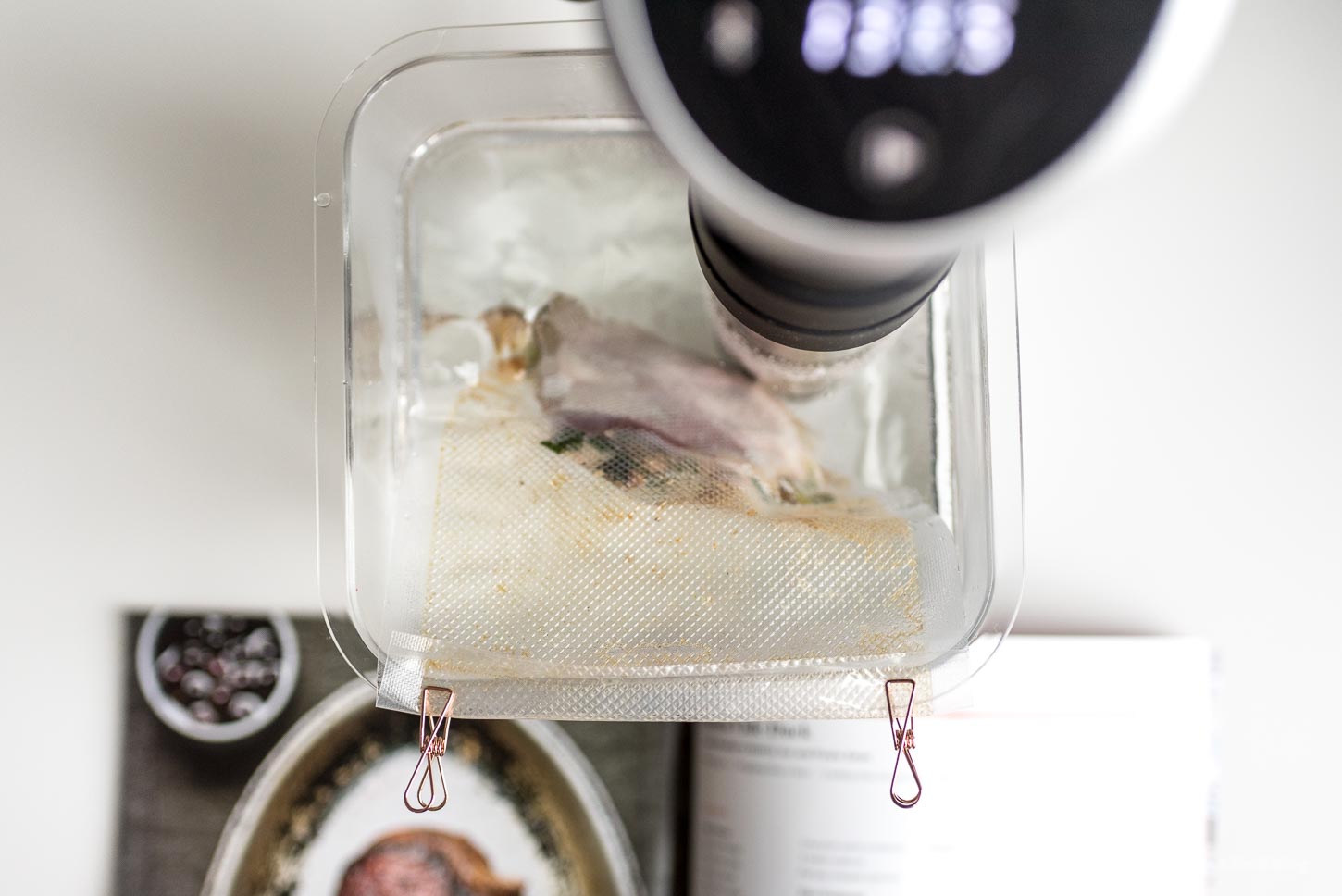
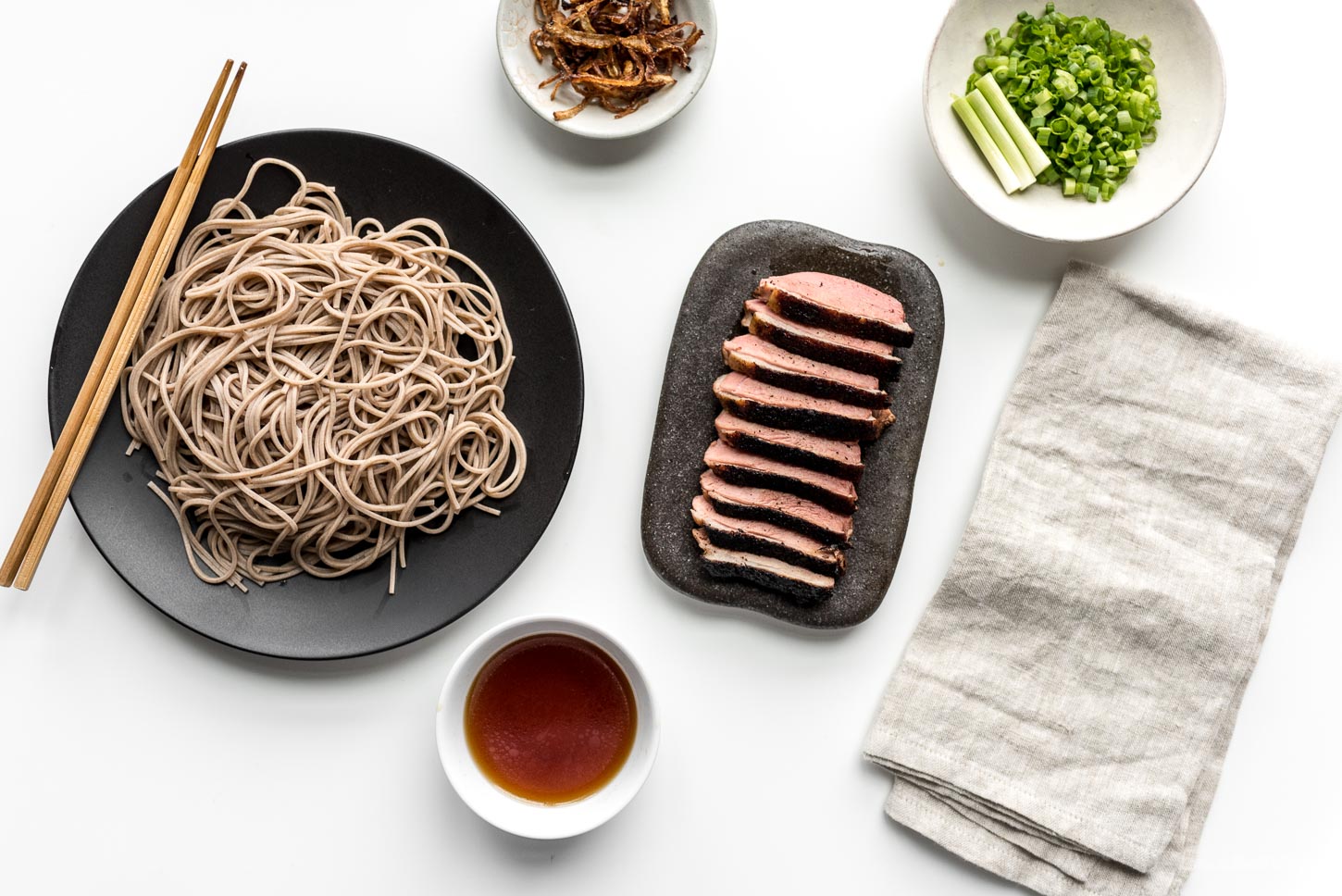
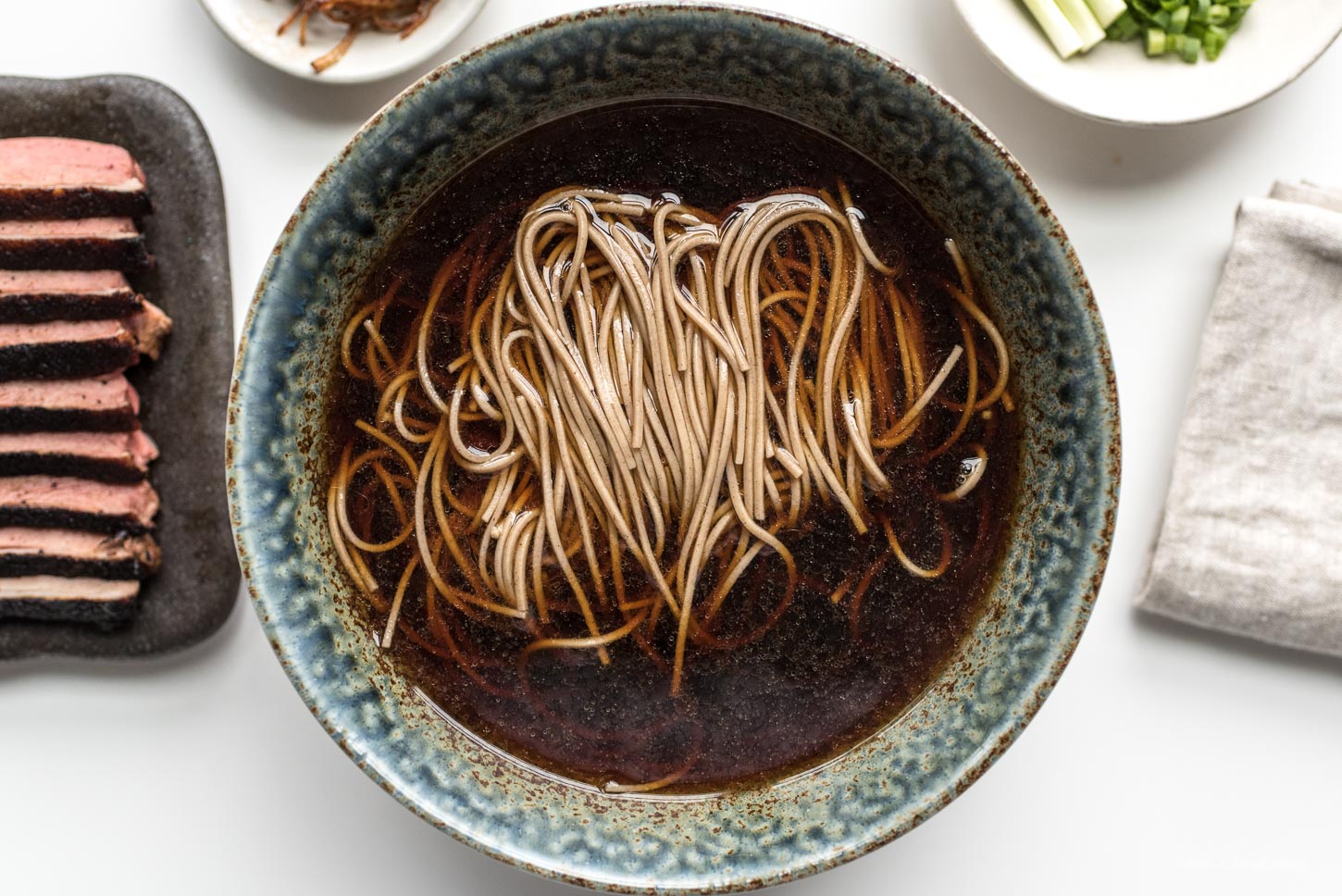
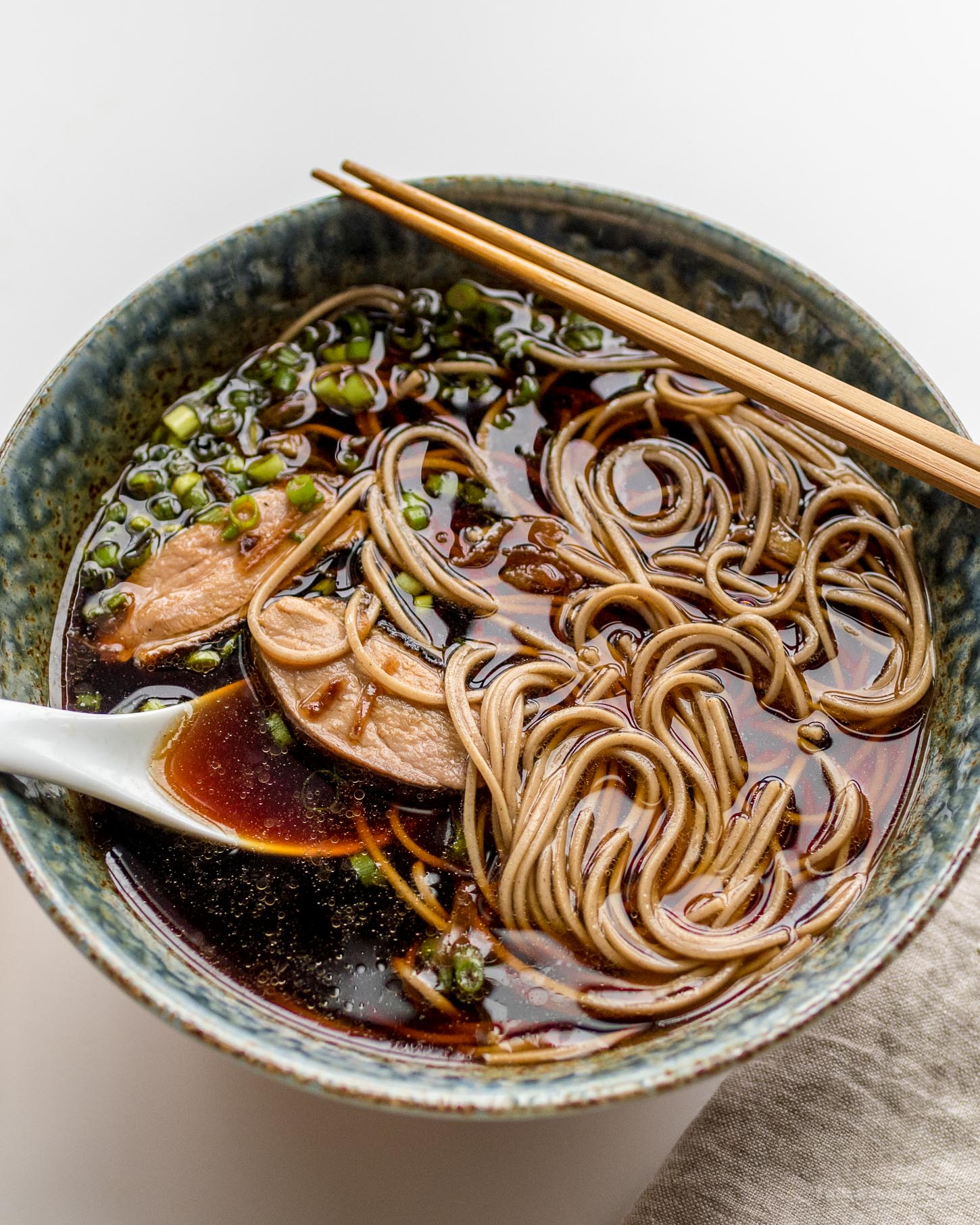
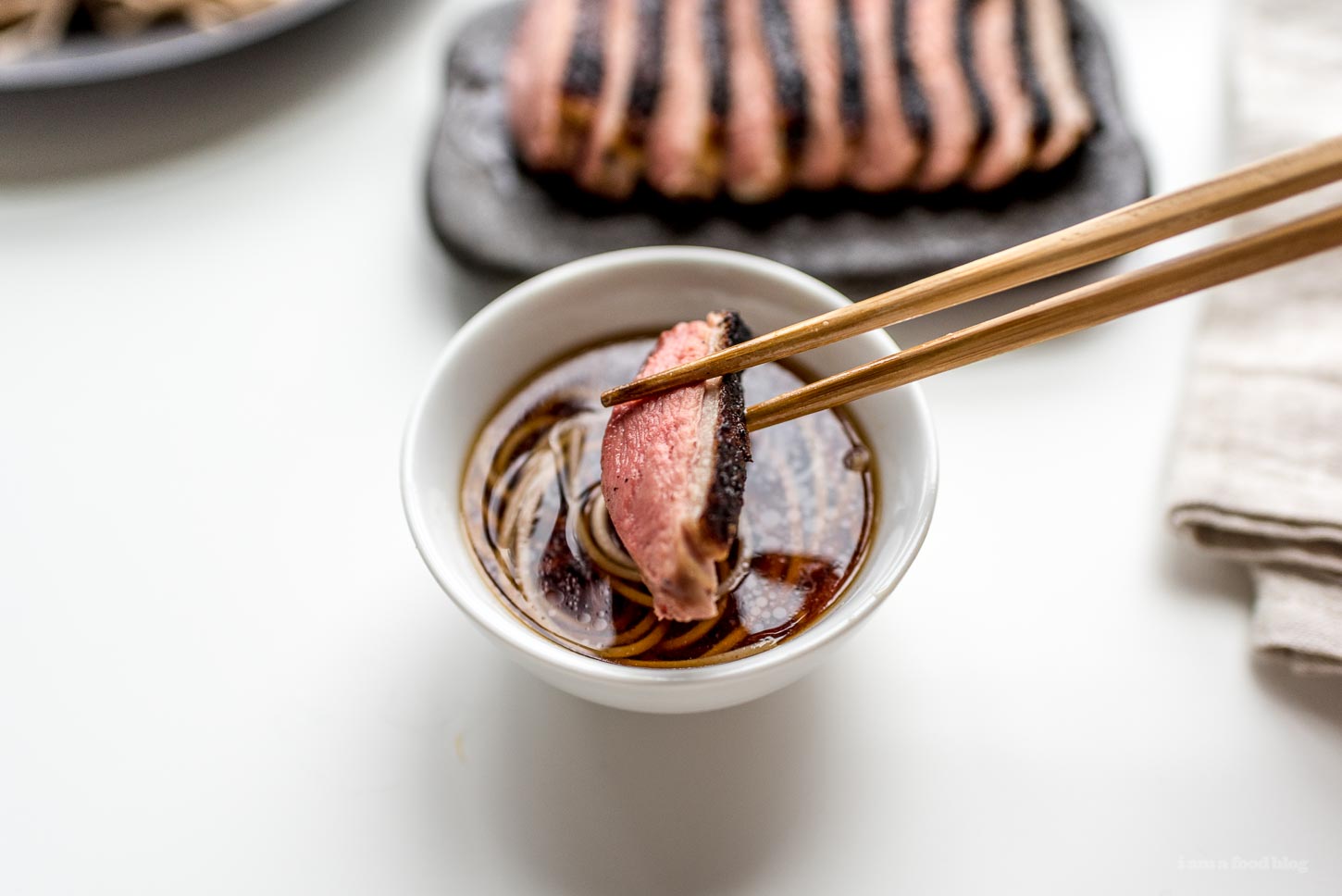

My faniky absolutely loves ramen so I can’t wait to try this out at home!
I am heading to Tokyo in a few weeks and would love a ramen roundup! This duck recipe sounds fantastic.
Is there any way I can replace plum paste? Plum jam maybe?
you can definitely use plum jam :)